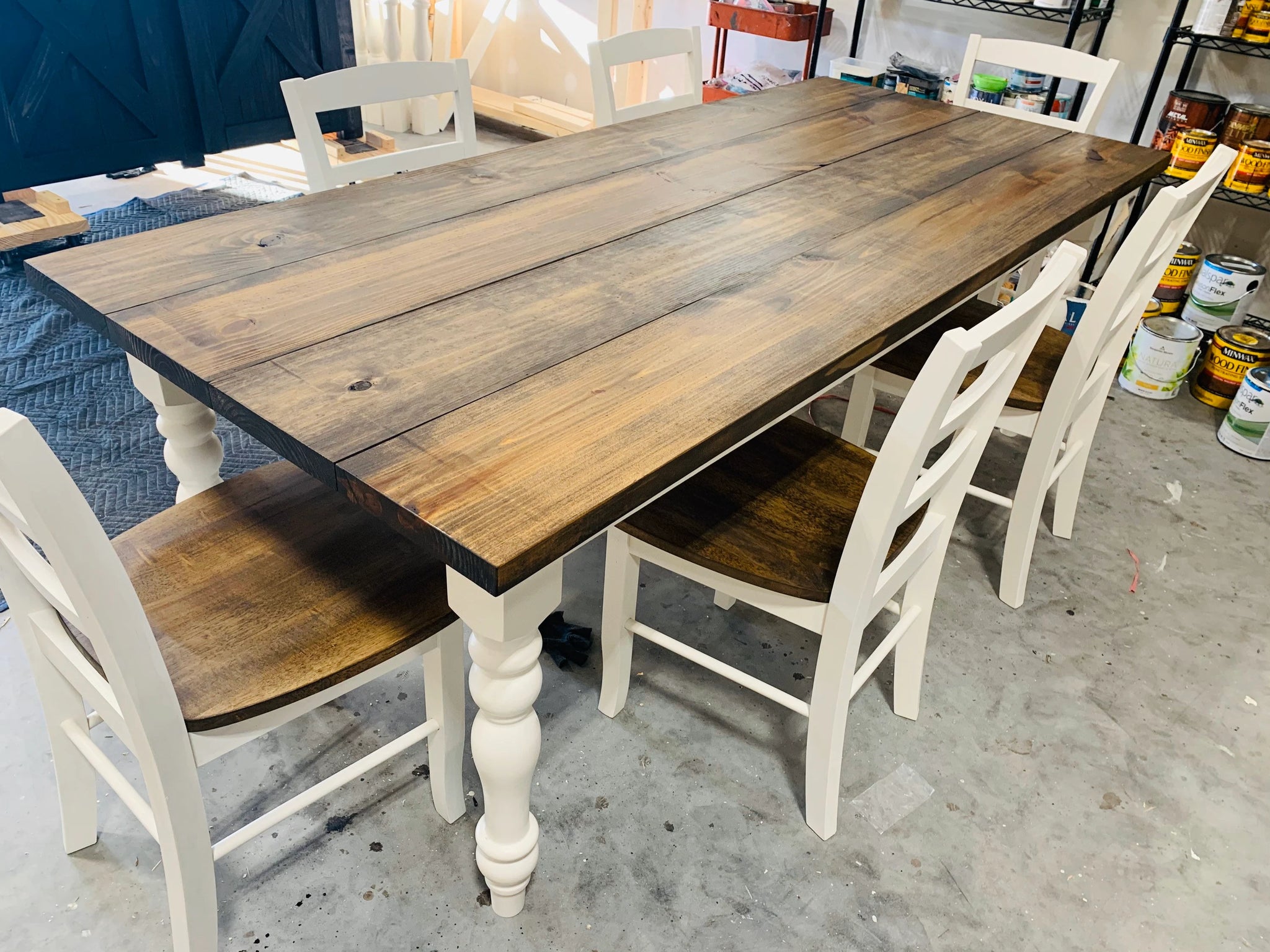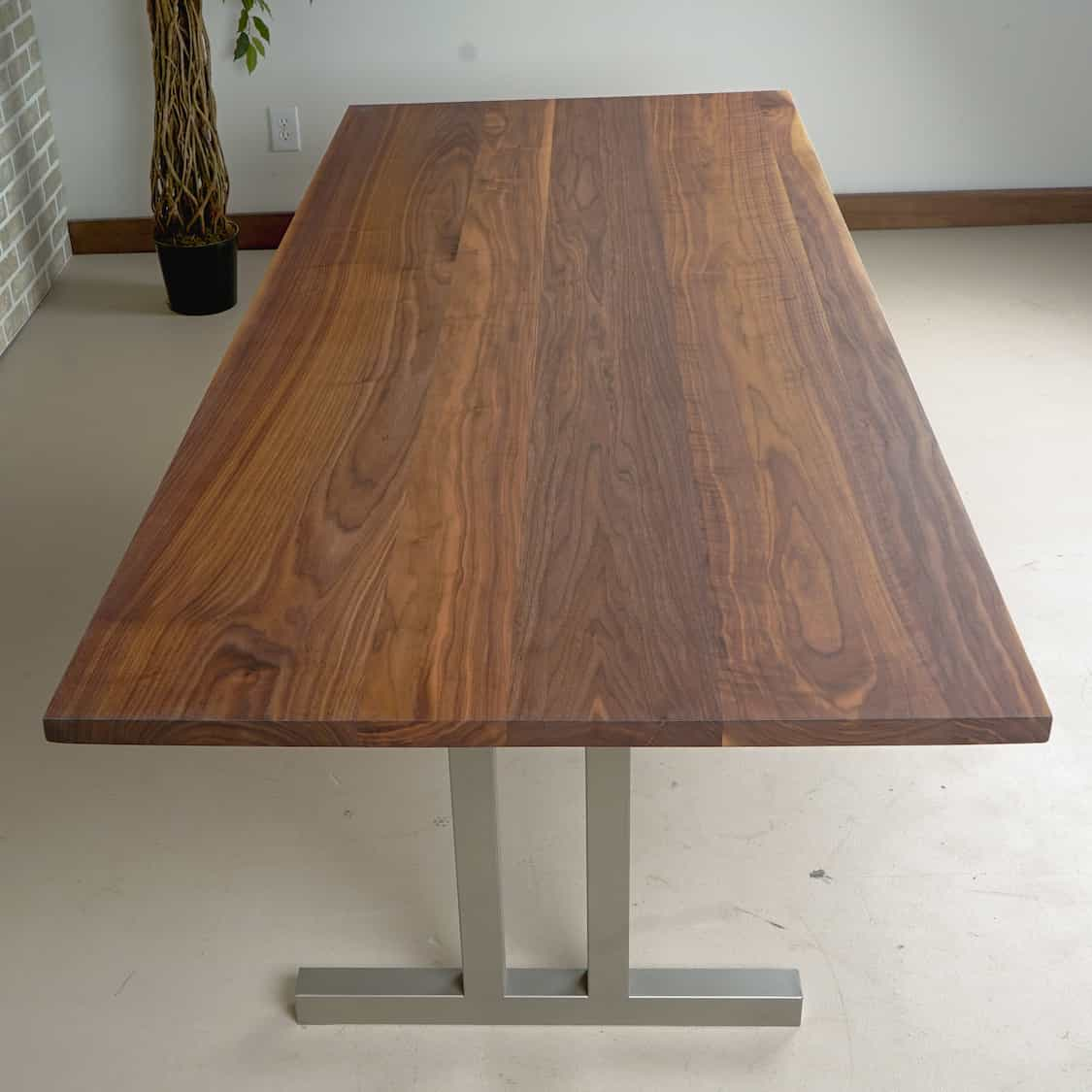Enhance Your Dining Room's Visual with Premium Dining Table Legs Wood
Enhance Your Dining Room's Visual with Premium Dining Table Legs Wood
Blog Article
Essential Factors To Consider for Choosing the Right Table Legs Wood
Choosing the appropriate wood for dining table legs involves a nuanced understanding of different variables that influence both functionality and visual allure. The option of wood type, ranging from robust hardwoods to a lot more delicate softwoods, plays a critical role in guaranteeing durability and stability. In addition, factors to consider concerning style, budget plan, and upkeep must be diligently assessed. Each of these aspects can considerably impact the total experience of your dining space. Understanding just how these factors relate is crucial for making an informed choice that meets your details demands and choices - Dining Table Legs Wood. What considerations will you prioritize in your option procedure?
Value of Wood Type

Hardwoods, such as oak, maple, and walnut, are frequently liked for their strength and resistance to wear. These kinds of wood offer a robust structure that can stand up to everyday use, making them optimal for eating tables that experience frequent gatherings. In comparison, softer timbers like want may be extra vulnerable to scratches and dents, which might not be perfect for high-traffic areas.
Additionally, the selection of wood can likewise influence the ease of maintenance. Some woods need regular oiling or securing to maintain their appearance, while others may be more flexible. Ultimately, selecting the ideal timber kind entails stabilizing visual factors to consider with functional requirements, ensuring that the table legs not just look appealing however also stand the examination of time.
Evaluating Security and Toughness
When reviewing eating table legs, one need to take into consideration the stability and stamina they offer to the overall framework. The legs are crucial in supporting the tabletop and making certain the eating experience is pleasurable and secure. A stable table is vital for preventing wobbling or tipping, which can bring about spills or crashes during dishes.
The selection of timber kind dramatically influences stamina. Hardwoods such as oak, walnut, and maple are generally much more durable and durable than softwoods like yearn or fir. Furthermore, the thickness and style of the legs play an essential role; thicker legs or those with a tapered design can supply better assistance and stability.

Visual Considerations
While functionality is paramount, the visual allure of table legs can not be neglected, as they significantly influence the total style and ambiance of the dining room. The choice of layout, wood, and coating can improve or take away from the table's aesthetic effect.

Coatings additionally play a crucial duty in appearances. An all-natural coating can highlight the timber's innate beauty, while painted or stained legs can introduce shade and character right into the room. Furthermore, the proportion and scale of the legs about the tabletop and surrounding furnishings needs to be considered to make sure aesthetic click over here equilibrium and cohesion.
Inevitably, the eating table legs must not just offer a practical function yet additionally add to a natural and inviting environment, making them an important factor to consider in the overall design of the eating location.
Upkeep Requirements
To ensure longevity and maintain the charm of wood dining table legs, regular upkeep is crucial (Dining Table Legs Wood). Wood is a natural product that can be vulnerable to harm from moisture, warmth, and put on. Establishing a routine care strategy will substantially improve the sturdiness of your eating table legs.
Begin with regular this article dusting using a soft, lint-free cloth to remove dust and debris that can scrape the surface area. For even more extensive cleansing, use a moderate soap option and damp cloth, preventing excess moisture that could permeate right into the timber. It is advisable to use a high-quality timber polish or conditioner every few months to nurture the timber and keep its appeal.
Deal with any damages or scratches quickly with ideal wood filler or touch-up pens to prevent more damage. By adhering to these upkeep requirements, you will certainly not only preserve the aesthetic charm of your wooden eating table legs yet likewise prolong their practical life-span.
Budget and Cost Factors
Budget plan and expense factors often play an important function in the decision-making process for choosing wooden eating table legs. When examining options, it is necessary to develop a clear budget that straightens with your total furniture financial investment. The price of wood table legs can differ significantly based on the sort of craftsmanship, wood, and design complexity.
Hardwoods such as oak, walnut, and cherry normally command greater prices due to their sturdiness and visual charm. On the other hand, softer timbers like want may be more inexpensive yet may not use the same durability. In addition, custom you can check here or artisan-crafted legs can sustain additional prices, reflecting the skill and time bought their development.
It is likewise essential to consider the possible long-lasting worth of your financial investment. While going with lower-cost materials might seem economically prudent at first, they might require even more frequent substitute or repairs, ultimately raising general expenditure.
As a result, stabilizing top quality and price is essential. Prioritize materials that meet your aesthetic preferences while ensuring they fit conveniently within your spending plan, allowing you to produce an eating location that is both useful and aesthetically appealing.
Final Thought
In verdict, selecting the appropriate wood for dining table legs requires cautious factor to consider of various variables, consisting of wood kind, security, visual appeals, upkeep, and budget. Hardwoods such as oak and walnut offer premium durability and stamina, while layout and density add to overall stability. Aesthetic charm and upkeep demands must line up with private choices and way of life. Inevitably, a knowledgeable choice will certainly enhance the long life and aesthetic charm of the eating table, ensuring contentment and capability for several years ahead.
Choosing the best type of timber for dining table legs is essential for both aesthetic charm and structural stability. Inevitably, choosing the ideal timber type includes balancing visual factors to consider with functional needs, making sure that the eating table legs not only look enticing yet additionally stand the test of time.
It is a good idea to apply a top notch timber polish or conditioner every few months to nourish the wood and keep its gloss.
The price of wood dining table legs can vary substantially based on the kind of style, craftsmanship, and wood intricacy.
In conclusion, choosing the proper wood for dining table legs requires cautious consideration of different variables, consisting of timber type, security, looks, maintenance, and budget plan.
Report this page